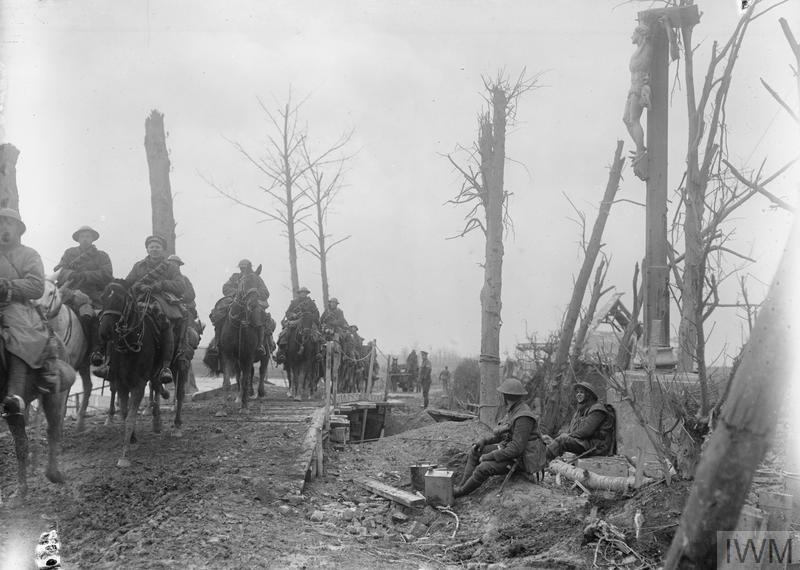Somme, 1918
The Second Battle of the Somme of 1918 was fought during the First World War on the Western Front from late March to early April, in the basin of the River Somme. It was part of a series of successful counter-offensives in response to the German Spring Offensive, after a pause for redeployment and supply.
The Honour is borne on the Guidon of the 4th Hussars.
Detail
The news came through on the morning of the 21st the attack had started in front of Arras; this led up to the breaking of the Hindenburg Line.
The 4th Hussars marched at 8.30 pm via Lucheux to Coullemont which was reached at about 3 am. This night march was partly for secrecy and partly to avoid the heat of the day, which at this time was very severe, they remained at Coullemont 22nd-23rd when orders were received to move at 4.30 pm and marched to Ransart, but, finding no water there, went on to Riviere, arriving in the dark.
On the 24th they moved to Ayette, and then onwards towards St.Leger in support of the Guards. ‘A’ Squadron, under Captain Cardwell, was advanced squadron, and Lieutenant Brennan did some very good work, as also did all the 3rd Troop of ‘A’ Squadron.
There were nine casualties during the day, all in ‘A’ Squadron. The Guards could not advance against the hostile machine-gun fire, which came from the high ground about Croisille, so the regiment had to stay out in the open during the whole day; there was no cover available, and although enemy aeroplanes were flying about, they were not shelled.
A patrol of ‘C’ Squadron, under Lieutenant Morrison, did good work in keeping liaison with the division on the left; and Lieutenant Humphreys, of ‘B’ Squadron, with his patrol, sent invaluable information as to the attack on the right.
This latter attack was carried out in the afternoon by the 99th Infantry Brigade with the assistance of tanks against Mory Copse. At the top of the hill where the copse was a battery of 77’s was in action, and as the tanks reached the crest they were knocked out one by one; but our infantry reached and occupied the copse, which was a very important tactical feature.
At 5.30 pm orders were received to withdraw. ‘A’ Squadron did not appear till the next day, owing to blocks in the traffic and darkness. The whole area was very heavily bombed during the night.
On the 25th of August the regiment marched back to Coullemont, starting at 6.30 am, and some reinforcements came up during the day. The regiment remained at Coullemont, and on the 27th the ‘B’ Echelon rejoined, it having been left at Willencourt.


